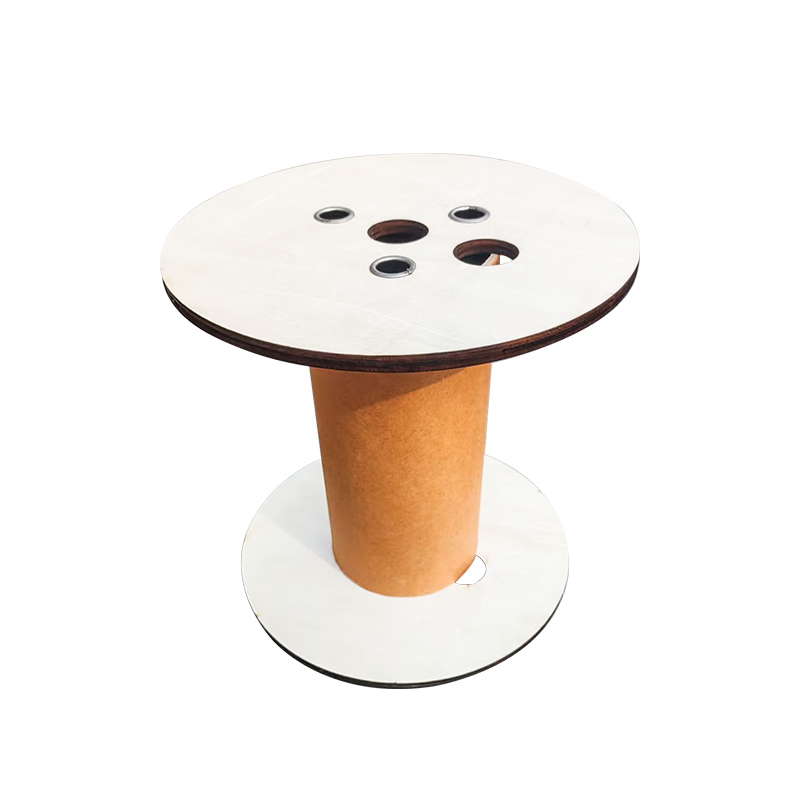May 12, 2025
When transporting a cable drum, if effective fixing measures are not taken, it is very easy for it to tip over, roll, slide, etc. during transportation, which may not only damage the cable, but also pose a safety hazard and even cause a traffic accident. Therefore, in order to ensure the safety and stability of the cable drum during transportation, it is necessary to follow a scientific fixing method, reasonably plan the loading method, use necessary protective devices and binding tools, and ensure that the entire transportation process is smooth and safe.
Before loading the cable drum, a reasonable loading plan should be formulated according to the size, weight, quantity and vehicle type of the cable drum. It is generally recommended to adopt the "axial horizontal lying" method, that is, to place the central axis of the cable drum parallel to the ground so that the discs on both sides of the drum are firmly in contact with the ground of the carriage. This method can effectively lower the center of gravity, enhance stability, and prevent tipping due to inertia during transportation. It is forbidden to place the cable drum upright (i.e. "standing"), otherwise it is very easy to tip over when the vehicle body is bumpy, turning or braking suddenly.
Limit devices must be added to the bottom and sides of the cable drum to prevent it from rolling and sliding. Special wooden wedges or rubber anti-slip blocks should be placed under the discs on both sides of the drum to firmly clamp the wheel disc. Prefabricated "grooved trays" or customized limit structures can also be used to embed the drum to structurally limit its moving space. If multiple sets of Cable Drums are transported, baffles or wooden partitions should be used to separate each set of drums to prevent collision or mutual squeezing between the drums.

In the fixing process, the use of high-strength lashing straps (such as ratchet straps) is a very critical step. The straps should be passed through the middle of the Cable Drum or the upper part of the disc, connected to the fixing rings or tensioning devices on both sides of the vehicle, and tightened in place to form an effective pressing force. At least two sets of straps should be set for each Cable Drum for symmetrical fixing. For larger or heavier drums, the lashing points should be appropriately increased to disperse the force and ensure that the drum does not slide forward and backward or tip over left and right.
In addition, special attention should be paid to the anti-skid measures on the vehicle floor. If the floor of the carriage is a smooth metal or plastic surface, anti-skid mats such as rubber mats, linen mats or wooden boards must be added to enhance friction. Anti-skid measures are more important for ramp transportation, mountain roads or winter ice and snow weather.
It should also be emphasized that when loading Cable Drum, the weight should be reasonably distributed to balance the center of gravity of the vehicle and avoid overloading or excessive center of gravity. Multiple drums should be arranged closely and in the same direction, and the fixing system should be fully evaluated considering factors such as turning, uphill, downhill, and braking in the transportation route. After loading, a dedicated person is required to check whether all fixing points are firm and whether there are any hidden dangers of loosening or slipping before transportation.
During transportation, drivers should avoid sudden acceleration, sharp turns or emergency braking to reduce load impact. At the same time, during long-distance transportation, it is recommended to check the fixing situation midway to ensure that the straps are not loose and the limit devices are not displaced.
When transporting Cable Drum, the basic principles of "lying down first, stable positioning, anti-slip and anti-vibration, multi-point binding, and balanced center of gravity" should be followed. Through reasonable loading methods and scientific fixing measures, the transportation safety can be comprehensively improved to ensure that the cables and equipment are intact during the entire transportation process.